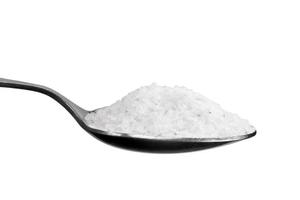The Australian Food and Grocery Council has rejected claims by Choice and the George Institute that salt levels in children's snacks and breakfast cereals are too high.
The AFGCs chief executive, Gary Dawson, said in a statement that the claims were false and that salt levels in children's snack foods were neither harmful nor hidden.
Choice recently reviewed 240 products based on data provided by The George Institute for Global Health and said it found unacceptably high levels of salt in products targeting children such as lunchbox snacks, breakfast cereals and sweet biscuits.
It reported that 20 per cent of the products it reviewed were classified as high in salt, nearly 60 per cent had medium levels and only 20 per cent were classified as low in salt.
“Alarmingly, 72 kids' products had more sodium per 100 grams than Smith's Original Chips,” Choice wrote.
Professor Bruce Neal from The George Institute said because recommended intake levels for children were much lower than for adults, the data was “very concerning” and called for “much tougher action to control the food industry”.
However, Dawson pointed to the federal government's 2007 National Children's Nutrition and Physical Activity Survey which found that breakfast cereals contributed only about four to five per cent of Australian childrens' sodium intake.
Dawson also noted that levels of salt and other nutrients and energy were already clearly displayed through the industry-led Daily Intake Guide (DIG) thumbnails on a wide variety of foods, including snack foods.
According to Dawson, the Australian food industry was also taking significant voluntary steps through innovation and reformulation to reduce sodium levels and other risk nutrients to assist Australians to improve their health and well-being through its support for the Food and Health Dialogue and through the industry-led Healthier Australia Commitment.
He said the food industry remained “committed to the process of improving the nutritional value of commonly eaten foods by reducing salt and saturated fat, and increasing fibre, wholegrain, fruit and vegetable content”.






